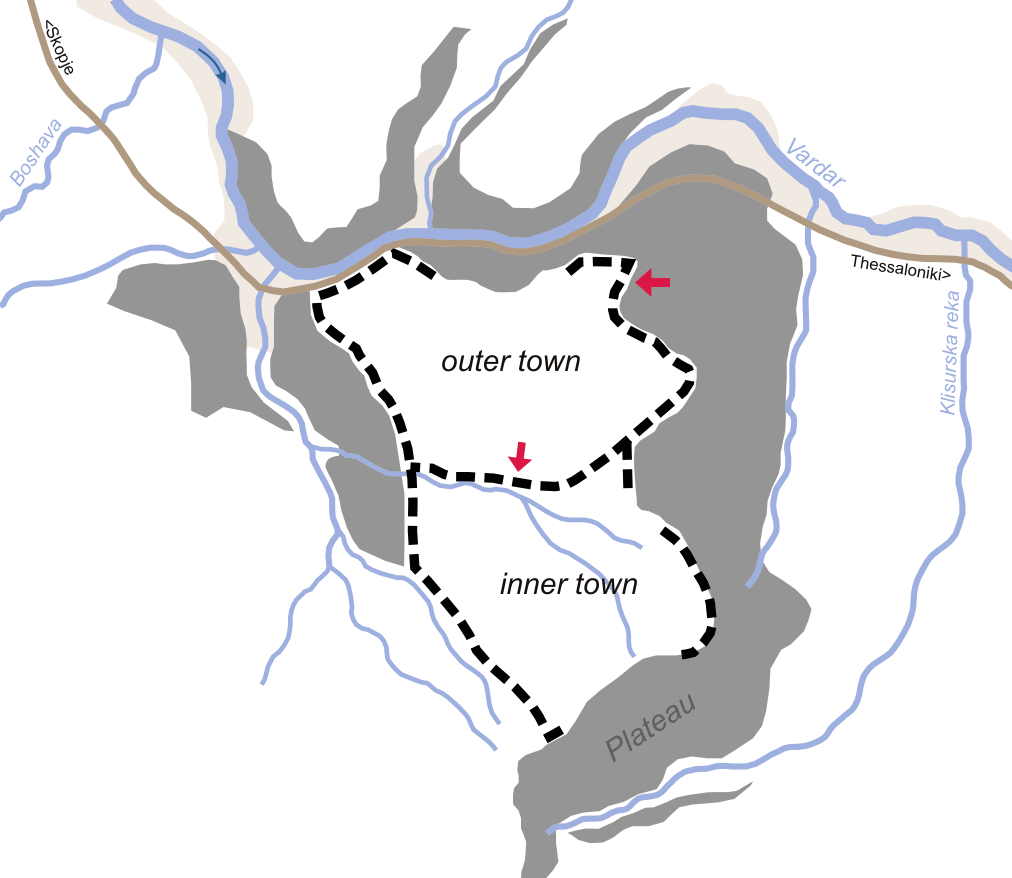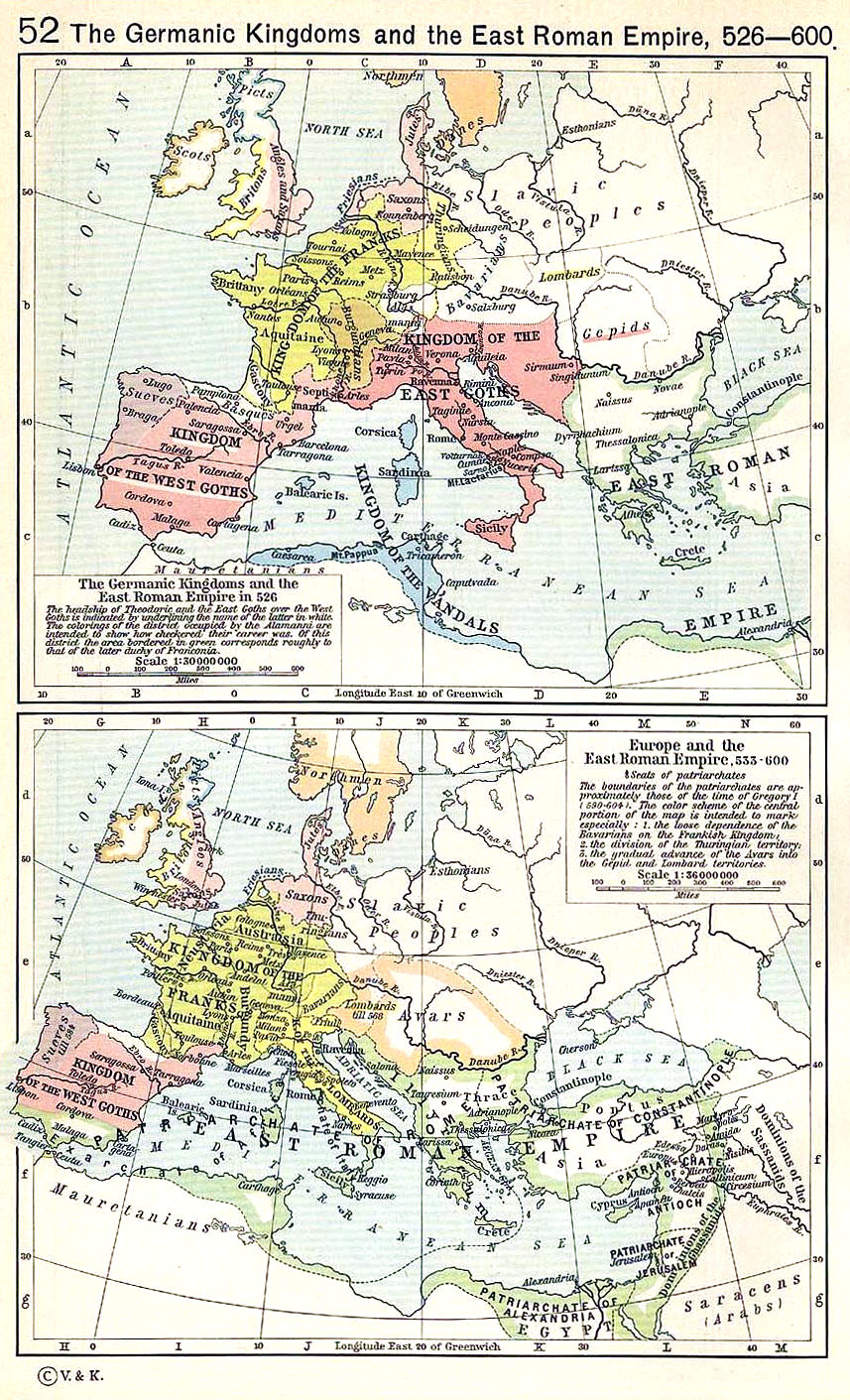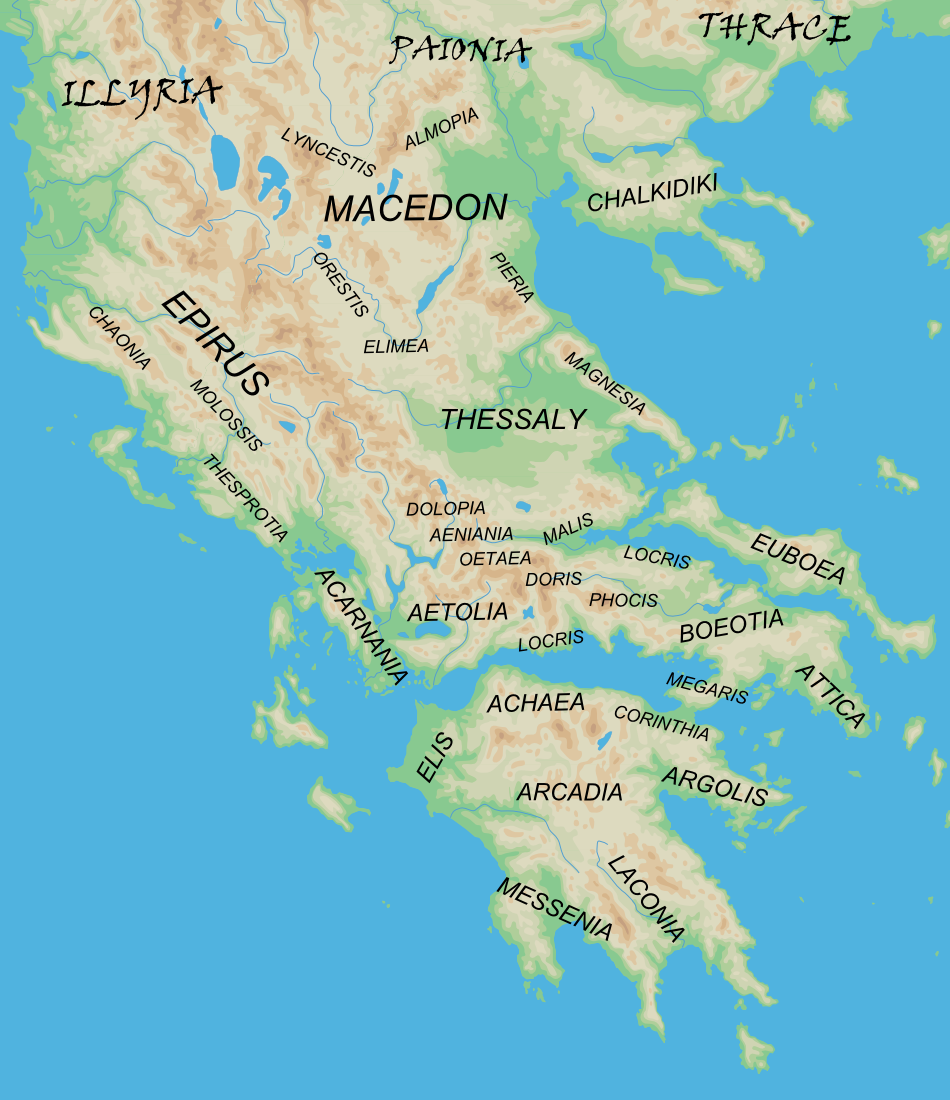|
Leo Sgouros
Leo Sgouros (), Latinized as Leo Sgurus, was a Greek independent lord in the northeastern Peloponnese in the early 13th century. The scion of the magnate Sgouros family, he succeeded his father as hereditary lord in the region of Nauplia. Taking advantage of the disruption caused by the Fourth Crusade, he made himself independent, one of several local rulers that appeared throughout the Byzantine Empire during the final years of the Angeloi dynasty. He expanded his domain into Corinthia and Central Greece, eventually marrying the daughter of former Byzantine emperor Alexios III Angelos (r. 1195–1203). His conquests, however, were short-lived, as the Crusaders forced him back into the Peloponnese. Blockaded in his stronghold on the Acrocorinth, he committed suicide in 1208. Biography Rise to power Leo Sgouros succeeded his father, Theodore Sgouros, in circa 1198 as governor of the area of Nauplia and the Argolid, one of the districts known as ''oria'', that collected taxes a ... [...More Info...] [...Related Items...] OR: [Wikipedia] [Google] [Baidu] |
Despot (court Title)
Despot or ''despotes'' () was a senior Byzantine court title that was bestowed on the sons or sons-in-law of reigning emperors, and initially denoted the heir-apparent of the Byzantine emperor. From Byzantium it spread throughout the late medieval Balkans and was also granted in the states under Byzantine cultural influence, such as the Latin Empire, the Second Bulgarian Empire, the Serbian Empire and its successor states ( Bulgarian and ), and the Empire of Trebizond. With the political fragmentation of the period, the term gave rise to several principalities termed "despotates" which were ruled either as independent states or as appanages by princes bearing the title of despot; most notably the Despotate of Epirus, the Despotate of the Morea, the Despotate of Dobruja and the Serbian Despotate. In modern usage, the word has taken a different meaning: "despotism" is a form of government in which a single entity rules with absolute power. The semantic shift undergone by the te ... [...More Info...] [...Related Items...] OR: [Wikipedia] [Google] [Baidu] |
Byzantine Emperor
The foundation of Constantinople in 330 AD marks the conventional start of the Eastern Roman Empire, which Fall of Constantinople, fell to the Ottoman Empire in 1453 AD. Only the emperors who were recognized as legitimate rulers and exercised sovereign authority are included, to the exclusion of junior co-emperors who never attained the status of sole or senior ruler, as well as of the List of Byzantine usurpers, various usurpers or rebels who claimed the imperial title. The following list starts with Constantine the Great, the first Christian emperor, who rebuilt the city of Byzantium as an imperial capital, Constantinople, and who was regarded by the later emperors as the model ruler. Modern historians distinguish this later phase of the Roman Empire as Byzantine due to the imperial seat moving from Rome to Byzantium, the Empire's integration of Christianity, and the predominance of Greek instead of Latin. The Byzantine Empire was the direct legal continuation of the eastern ... [...More Info...] [...Related Items...] OR: [Wikipedia] [Google] [Baidu] |
Sparta
Sparta was a prominent city-state in Laconia in ancient Greece. In antiquity, the city-state was known as Lacedaemon (), while the name Sparta referred to its main settlement in the Evrotas Valley, valley of Evrotas (river), Evrotas river in Laconia, in southeastern Peloponnese. Around 650 BC, it rose to become the dominant military land-power in ancient Greece. Sparta was recognized as the leading force of the unified Greek military during the Greco-Persian Wars, in rivalry with the rising naval power of Classical Athens, Athens. Sparta was the principal enemy of History of Athens, Athens during the Peloponnesian War (431–404 BC), from which it emerged victorious after the Battle of Aegospotami. The decisive Battle of Leuctra against Thebes, Greece, Thebes in 371 BC ended the Spartan hegemony, although the city-state maintained its Independence, political independence until its forced integration into the Achaean League in 192 BC. The city nevertheless recovered m ... [...More Info...] [...Related Items...] OR: [Wikipedia] [Google] [Baidu] |
Leo Chamaretos
Leo is the Latin word for lion. It most often refers to: * Leo (constellation), a constellation of stars in the night sky * Leo (astrology), an astrological sign of the zodiac * Leo (given name), a given name in several languages, usually masculine The terms Leo or Léo may also refer to: Acronyms * Lateral epitaxial overgrowth – a semiconductor substrate technology * Law enforcement officer * Law enforcement organisation * '' Louisville Eccentric Observer'', a free weekly newspaper in Louisville, Kentucky * Michigan Department of Labor and Economic Opportunity * Legal Ombudsman, often informally abbreviated to LEO or LeO in the UK. Arts and entertainment Music * L.E.O. (band), a band by musician Bleu and collaborators * ''Leo'' (soundtrack), soundtrack album by Anirudh Ravichander for the 2023 Indian film Film * ''Leo'' (2000 film), a Spanish film * ''Leo'' (2002 film), a British-American film * ''Leo'', a 2007 Swedish film by Josef Fares * ''Leo'' (2012 fil ... [...More Info...] [...Related Items...] OR: [Wikipedia] [Google] [Baidu] |
Constantinople
Constantinople (#Names of Constantinople, see other names) was a historical city located on the Bosporus that served as the capital of the Roman Empire, Roman, Byzantine Empire, Byzantine, Latin Empire, Latin, and Ottoman Empire, Ottoman empires between its consecration in 330 until 1930, when it was renamed to Istanbul. Initially as New Rome, Constantinople was founded in 324 during the reign of Constantine the Great on the site of the existing settlement of Byzantium, and shortly thereafter in 330 became the capital of the Roman Empire. Following the collapse of the Western Roman Empire in the late 5th century, Constantinople remained the capital of the Eastern Roman Empire (also known as the Byzantine Empire; 330–1204 and 1261–1453), the Latin Empire (1204–1261), and the Ottoman Empire (1453–1922). Following the Turkish War of Independence, the Turkish capital then moved to Ankara. Although the city had been known as Istanbul since 1453, it was officially renamed as Is ... [...More Info...] [...Related Items...] OR: [Wikipedia] [Google] [Baidu] |
Dobromir Chrysos
Dobromir Chrysos (, , ) was a Vlach warlord in eastern Macedonia during the reign of the Byzantine emperor Alexios III Angelos.Florin Curta, Southeastern Europe in the Middle Ages, 500-1250, Cambridge University Press, 2006, , p. 363.Panos Sophoulis, Banditry in the Medieval Balkans, 800-1500, Palgrave Macmillan, 2020, , pp. 81–82.John Van Antwerp Fine, The Late Medieval Balkans: A Critical Survey from the Late Twelfth Century to the Ottoman Conquest, University of Michigan Press, 1994, , p. 29.Alexandru Madgearu, The Asanids: The Political and Military History of the Second Bulgarian Empire (1185-1280), BRILL, 2016, , p. 110; 117; 158. Life Byzantine historian Niketas Choniates reported that Dobromir Chrysos was, despite his Slavic name, a Vlach by birth.Paul Stephenson, Byzantium's Balkan Frontier: A Political Study of the Northern Balkans, 900-1204, Cambridge University Press, 2000, , p. 307. Per Bulgarian researcher Dimitar Bechev, he was of mixed Slavic–Vlach origins. ... [...More Info...] [...Related Items...] OR: [Wikipedia] [Google] [Baidu] |
Manuel Kamytzes
Manuel Kamytzes Komnenos Doukas Angelos (; after 1202) was a Byzantine general who was active in the late 12th century, and led an unsuccessful rebellion in 1201–02, against his cousin, Emperor Alexios III Angelos. A member of the Kamytzes family, the Byzantine high nobility and cousin of emperors Isaac II Angelos and Alexios III Angelos, Kamytzes served as a senior military commander in the Balkans, with the rank of '' protostrator'', from 1185/86 until 1199. For Isaac II he fought against the Norman invaders in 1185 and the uprising of Alexios Branas in 1186/87. Kamytzes twice campaigned against the Vlach– Bulgarian rebellion in the northern Balkans, as well as against Cuman raiders in the same region. In 1189, he clashed with the German contingent of the Third Crusade, under Frederick I Barbarossa, as they crossed Byzantine territory. Under Alexios III, Kamytzes campaigned unsuccessfully against the Bulgarian rebel leader Ivanko in 1197. In early 1199, as Alexios III b ... [...More Info...] [...Related Items...] OR: [Wikipedia] [Google] [Baidu] |
Macedonia (region)
Macedonia ( ) is a geographical and historical region of the Balkan Peninsula in Southeast Europe. Its boundaries have changed considerably over time; however, it came to be defined as the modern geographical region by the mid-19th century. Today the region is considered to include parts of six Balkan countries: all of North Macedonia, large parts of Greece and Bulgaria, and smaller parts of Albania, Serbia, and Kosovo. It covers approximately and has a population of around five million. Macedonia (Greece), Greek Macedonia comprises about half of Macedonia's area and population. Its oldest known settlements date back approximately to 7,000 BC. From the middle of the 4th century BC, the Kingdom of Macedon became the dominant power on the Balkan Peninsula; since then Macedonia has had a diverse history. Etymology Both proper nouns ''Makedṓn'' and ''Makednós'' are morphologically derived from the Ancient Greek adjective ''makednós'' meaning "tall, slim", and are related t ... [...More Info...] [...Related Items...] OR: [Wikipedia] [Google] [Baidu] |
Thessaly
Thessaly ( ; ; ancient Aeolic Greek#Thessalian, Thessalian: , ) is a traditional geographic regions of Greece, geographic and modern administrative regions of Greece, administrative region of Greece, comprising most of the ancient Thessaly, ancient region of the same name. Before the Greek Dark Ages, Thessaly was known as Aeolia (, ), and appears thus in Homer's ''Odyssey''. Thessaly Convention of Constantinople (1881), became part of the modern Greek state in 1881, after four and a half centuries of Ottoman Greece, Ottoman rule. Since 1987 it has formed one of the country's 13 Modern regions of Greece, regions and is further (since the Kallikratis reform of 2011) sub-divided into five regional units of Greece, regional units and 25 municipalities of Greece, municipalities. The capital of the region is Larissa. Thessaly lies in northern central Greece and borders the regions of Macedonia (Greece), Macedonia to the north, Epirus (region), Epirus to the west, Central Greece (geo ... [...More Info...] [...Related Items...] OR: [Wikipedia] [Google] [Baidu] |
Byzantine Navy
The Byzantine navy was the Navy, naval force of the Byzantine Empire. Like the state it served, it was a direct continuation from its Roman navy, Roman predecessor, but played a far greater role in the defence and survival of the state than its earlier iteration. While the fleets of the Roman Empire faced few great naval threats, operating as a policing force vastly inferior in power and prestige to the Roman army, army, command of the sea became vital to the very existence of the Byzantine state, which several historians have called a "maritime empire". The first threat to Roman hegemony in the Mediterranean Sea was posed by the Vandals in the 5th century, but their threat was ended by the wars of Justinian I in the 6th century. The re-establishment of a permanently maintained fleet and the introduction of the dromon galley in the same period also marks the point when the Byzantine navy began departing from its late Roman roots and developing its own characteristic identity. Thi ... [...More Info...] [...Related Items...] OR: [Wikipedia] [Google] [Baidu] |
Argolid
The regions of ancient Greece were sub-divisions of the Hellenic world as conceived by the ancient Greeks, shown by their presence in the works of ancient historians and geographers or in surviving legends and myths. Conceptually, there is no clear theme to the structure of these regions. Some, particularly in the Peloponnese, can be seen primarily as distinct geo-physical units, defined by physical boundaries such as mountain ranges and rivers. Conversely, the division of central Greece between Boeotia, Phocis, Doris and the three parts of Locris, seems to be attributable to ancient tribal divisions and not major geographical features. Both types of regions retained their identity throughout the Greek Dark Ages and its tumultuous changes in the local population and culture, giving them a less political and more symbolic presence. Other geographical divisions not identified with the aforementioned areas did, however, change over time, suggesting a closer connection with tribal ... [...More Info...] [...Related Items...] OR: [Wikipedia] [Google] [Baidu] |
Nauplia
Nafplio or Nauplio () is a coastal city located in the Peloponnese in Greece. It is the capital of the regional unit of Argolis and an important tourist destination. Founded in antiquity, the city became an important seaport in the Middle Ages during the Frankokratia as part of the lordship of Argos and Nauplia, held initially by the de la Roche following the Fourth Crusade before coming under the Republic of Venice and, lastly, the Ottoman Empire. The city was the second capital of the First Hellenic Republic and of the Kingdom of Greece, from 1827 until 1834. Name The name of the town changed several times over the centuries. The modern Greek name of the town is ''Nafplio'' (Ναύπλιο). In modern English, the most frequently used forms are ''Nauplia'' and ''Navplion''. The oldest reference to Nafplio appears to be in the so-called "Aegean List" from the Mortuary Temple of Amenhotep III, dating to 14th century BCE, where it is recorded as (). In Classical Antiquity, ... [...More Info...] [...Related Items...] OR: [Wikipedia] [Google] [Baidu] |









